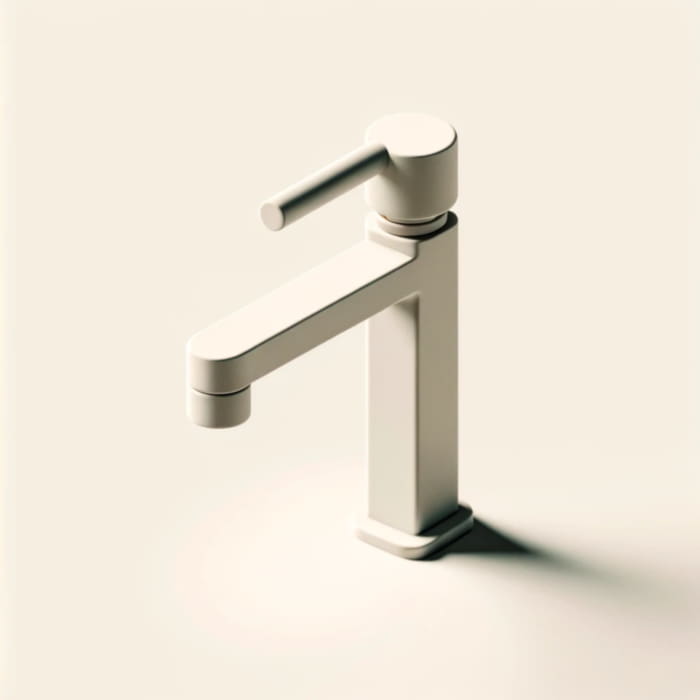Your kitchen tap is one of the most used fixtures in your home, so choosing the right one isn’t just about aesthetics; it’s about functionality, durability, and convenience. This comprehensive guide will walk you through everything you need to know about choosing the perfect kitchen tap for your needs, from understanding the different types available to considering essential features and materials.
Whether you’re renovating your kitchen or simply replacing an old tap, this guide will equip you with the knowledge and confidence to make an informed decision. By understanding the different factors involved, you can avoid costly mistakes and end up with a tap that perfectly complements your kitchen and elevates your cooking experience.
Key Considerations
Before diving into the specifics, let’s explore some key considerations that will guide your decision-making process:
1. Type of Kitchen Tap:
- Mixer Tap: The most popular choice, offering hot and cold water control in a single lever.
- Pillar Taps: Traditional option with separate hot and cold water taps.
- Pull-Out Tap: Features a retractable hose for added reach and flexibility.
- Boiling Water Tap: Dispenses boiling water instantly, ideal for tea, coffee, and pasta.
- Filter Tap: Provides filtered drinking water directly from the tap.
2. Size and Design:
- Consider the size of your sink and available space.
- Choose a tap with a spout height and reach that suits your needs.
- Think about the style of your kitchen and choose a tap that complements it.
3. Material and Finish:
- Popular options include chrome, stainless steel, brass, and black finishes.
- Consider the durability and ease of cleaning when choosing a material.
4. Features and Functionality:
- Look for features such as spray functionality, adjustable flow, and eco-friendly options.
- Think about your specific needs and choose a tap that offers the features you’ll use most.
5. Budget:
- Kitchen taps come in a range of prices to suit all budgets.
- Set a realistic budget and compare different options to find the best value for your money.
Exploring Different Types of Kitchen Taps
1. Mixer Taps:
- These are the most popular and versatile option, offering hot and cold water control in a single lever.
- They come in various designs and sizes to suit different kitchen styles.
- Consider features like pull-out hoses or eco-friendly spray functions.
2. Pillar Taps:
- These are a traditional option with separate hot and cold water taps.
- They offer a classic look and are often used in period homes.
- Consider the space available and choose pillar taps that are proportional to your sink.
3. Pull-Out Taps:
- These feature a retractable hose that provides added reach and flexibility.
- They are ideal for rinsing dishes, filling tall pots, and cleaning the sink.
- Consider the length of the hose and choose one that can reach all areas of your sink.
4. Boiling Water Taps:
- These dispense boiling water instantly, making them ideal for tea, coffee, pasta, and more.
- They offer convenience and can save time and energy.
- Consider the safety features and the impact on your water bills.
5. Filter Taps:
- These provide filtered drinking water directly from the tap, eliminating the need for bottled water.
- They can improve the taste and quality of your drinking water.
- Consider the filter type and the cost of replacement filters.
Matching the Perfect Tap to Your Kitchen
- Consider the style of your kitchen: Modern kitchens often favor sleek chrome or black finishes, while traditional kitchens might suit brass or brushed steel.
- Think about the size and layout of your sink: Choose a tap with a spout height and reach that provides adequate clearance for your dishes and pots.
- Consider your budget and desired features: Prioritize the features you use most and set a realistic budget that allows for quality materials and construction.
Additional Tips for Choosing the Right Kitchen Tap
- Read online reviews and compare different brands and models.
- Visit a showroom to see and test different taps in person.
- Seek advice from a plumber or kitchen designer.
- Consider the warranty and after-sales service offered by the manufacturer.
Are all kitchen taps the same size?
No, all kitchen taps are not the same size. Their size can vary greatly depending on the design, style, and functionality desired. Kitchen taps can range from small and compact types for minimalist spaces to large and complex systems for professional-style kitchens. Therefore, it’s essential to have accurate measurements before purchase.
What type of kitchen tap is best?
The best type of kitchen tap largely depends on individual needs and interior design preferences. However, pull-down taps are widely preferred due to their high functionality, allowing easy control of water flow and direction. They often come in stylish designs that can enhance the visual appeal of your kitchen. Their extendable hose feature aids in thorough dish cleaning and filling large pots.
What are the different types of hand taps?
- Taper Tap: Taper taps are the most common type of tap and are ideal for starting threads. They have a gradual taper over their threads’ entire length to distribute cutting action throughout the tool.
- Plug Tap: A plug tap has a slight taper in the first few threads but is mainly parallel for the rest of the tool’s length. This tool is used for generating full threads.
- Bottoming Tap: Compared to the other tap types, the bottoming tap has the shortest taper. It’s mainly used in holes where threads must extend to the very bottom.
- Spiral Pointed Tap: The Spiral Point Tap has an angular cutting face that pushes the displaced material ahead of the tap. It prevents blockages and is ideal for through-holes.
- Spiral Fluted Tap: This tap has spiral grooves that direct chips towards the back of the tap. They are great for blind holes and tougher materials.
- Forming Tap: Rather than cutting threads, a forming tap reshapes the material to create the thread form. It’s notable for producing stronger threads.
- Interrupted Thread Tap: This tap only uses every second or third tooth, reducing friction and torque, which makes it ideal for tough metals.
- Pipe Tap: Pipe taps are designed for tapping threads into pipe fittings and other parts that are utilised in piping systems.
- Hand Tap Sets: These are sets that include all three primary hand taps, taper, plug, and bottoming taps.
- Nut Tap: Nut Tap is used to rectify threads in nuts and similar parts.
Summary: Things to Remember
- Choose a tap type that suits your needs and preferences.
- Consider the size, design, and material of the tap.
- Think about features and functionality that would be most beneficial for you.
- Set a realistic budget and compare different options.


